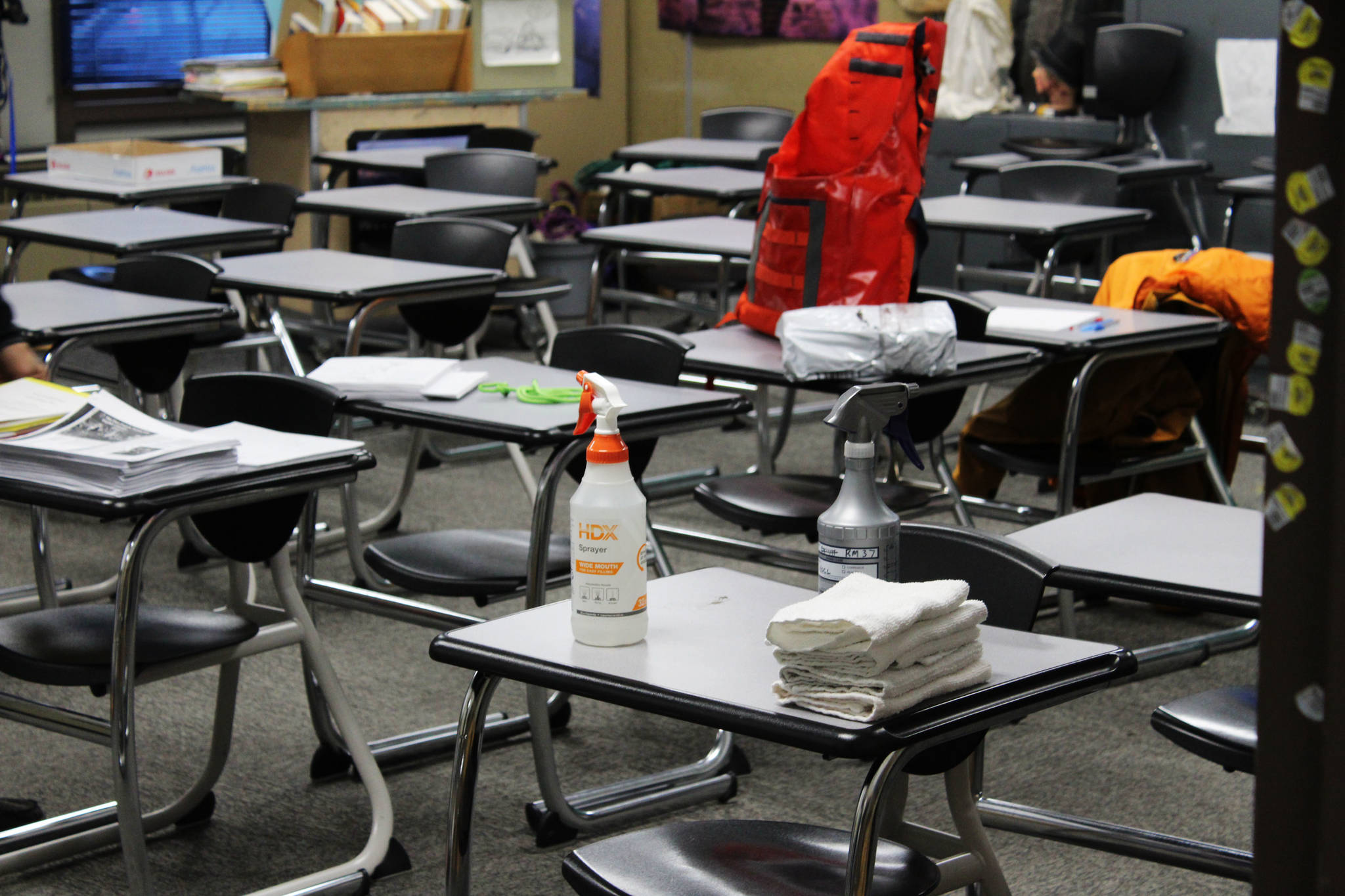New masking protocols, additional mental health resources and flexible learning options are among the ways the Kenai Peninsula Borough School District plans to address the impacts of the COVID-19 pandemic throughout the 2021-2022 school year.
That’s according to a plan submitted to the state by the district, which is required in order for the school district to receive a third round of funding from the federal government through the American Rescue Plan Act.
In all, KPBSD will have received three rounds of federal COVID-19 relief funding, which comes from the Elementary and Secondary School Emergency Relief, or ESSER, fund.
KPBSD received about $2.3 million in original ESSER funds under the federal CARES Act, which it used primarily on COVID-19 mitigation measures including the purchase of personal protective equipment and Zoom subscriptions.
The district received just over $9 million in ESSER II funds through the Coronavirus Response and Relief Supplemental Appropriations (CRRSA) Act. A third round of federal funding will be made available to the district through the American Rescue Plan Act, which was signed into law earlier this year.
The district ultimately decided that it would use some of its ESSER II funds to save teaching positions after monthslong budget negotiations between the school district and the Kenai Peninsula Borough about how much the borough should contribute to the school district’s FY22 budget.
Former KPBSD Superintendent John O’Brien said then that ESSER II funds should be used for their intended purpose, which is to help catch up students who fell behind academically during the COVID-19 pandemic through the implementation of additional support resources, such as summer enrichment programs or after-school programs.
The decision to use ESSER II funds to save teaching positions came after the district learned it would receive a third round of ESSER funding.
ESSER III funds, however, come with conditions. For example, 20% of ESSER III funds must be used for learning recovery and school districts must develop a COVID-19 mitigation plan to be reviewed every six months. According to a mitigation plan template provided by the Alaska Department of Education and Early Development, the district must also seek and take into account public input on whether or not revisions are needed to the mitigation plan.
“Districts must implement, to the greatest extent practicable, prevention and mitigation policies in line with the most up-to-date guidance from the Centers for Disease Control and Prevention (CDC) for the reopening and operation of school facilities to effectively maintain the health and safety of students, educators, and other staff,” the template says.
KPBSD was required to submit its plan by June 23. The plan available on the district’s Planning and Operations website is dated June 14.
Among other things, the plan says that face-covering policies for staff and students will follow guidance from the U.S. Centers for Disease Control and Prevention. Face coverings for fully vaccinated visitors is optional, with unvaccinated visitors “strongly advised” to wear a mask. Physical distancing will be encouraged for people working together in buildings and signs showing proper hand-washing etiquette will be posted. School district facilities also have bipolar ionization systems installed.
Additionally, the district’s Health Services Coordinator will monitor COVID developments. In addition to providing COVID-19 testing capabilities at district schools, the plan says KPBSD has also partnered with peninsula health entities to provide COVID-19 vaccine clinics in district facilities and has shared information about the vaccine with the KPBSD community.
The district was also asked to explain how it would continue to offer services that address the academic, social, emotional and mental health needs of KPBSD staff and students.
“The largest group most impacted by the COVID 19 Pandemic is the students,” the plan reads. “It has been stated students have been the most resilient in this crisis; however, it is the responsibility of the school community to ensure students’ social, emotional, mental health, physical health, food services, and other needs are being met.”
KPBSD faced criticism from some members of the community during the 2020-2021 school year, who said their COVID-19 mitigation protocols went too far and negatively impacted students’ mental health.
In addressing students’ academic needs, the district’s plan cites as contributing factors input solicited from stakeholders and the community. The plan says the district will allow students to take classes in person, remotely or in a hybrid format, with all 42 district schools offering in person with “traditional coursework and expectations.”
The district notes in the plan that KPBSD beefed up its Information Technology (IT) Department to accommodate remote learners by providing, fixing and replacing devices, supporting and providing internet access and offering technology support, among other things.
To address students’ mental health needs, the district’s plan says it will staff school psychologists in school and itinerant support, interventionists, 504 coordinators, special education case managers and student support liaisons in traditional high schools, among others, in addition to traditional school staff.
For staff, the plan notes that mental health and wellness resources are available through the district’s benefits department and that district leadership will increase site visits to schools on and off the road system.
The plan says after-school co-curricular activities will resume or continue and will follow guidelines from the Alaska School Activities Association, or ASAA. Before- and after-school programs will also be offered.
According to the plan, it is the district’s intent to regularly review the plan as conditions change, or every six months, with revisions based on input from local medical staff, the Alaska Department of Health and Social Services and “key decision makers” in the district and in the Kenai Peninsula Borough.
KPBSD’s full ARPA Mitigation Plan can be found on the district’s website at kpbsd.k12.ak.us.
Reach reporter Ashlyn O’Hara at ashlyn.ohara@peninsulaclarion.com.

